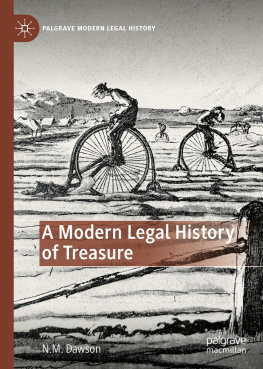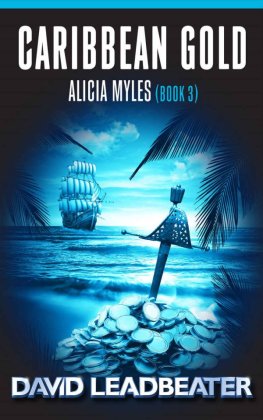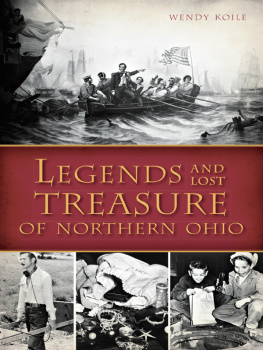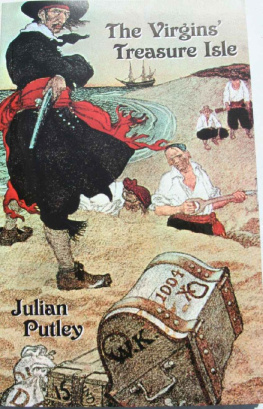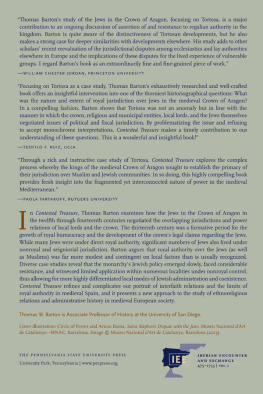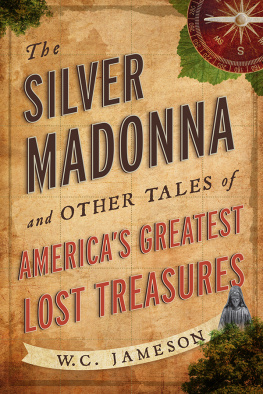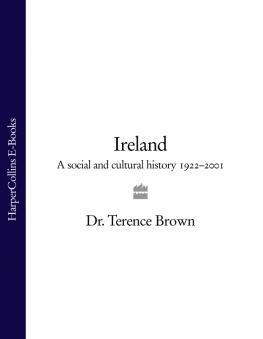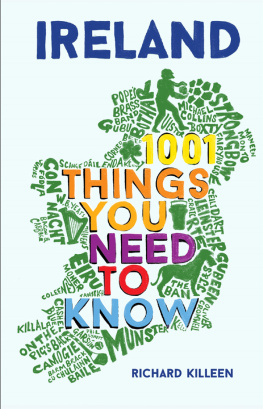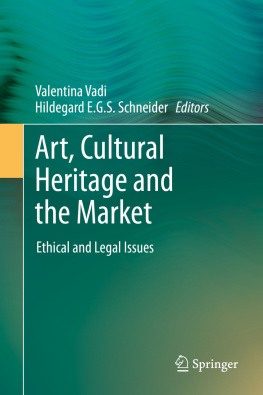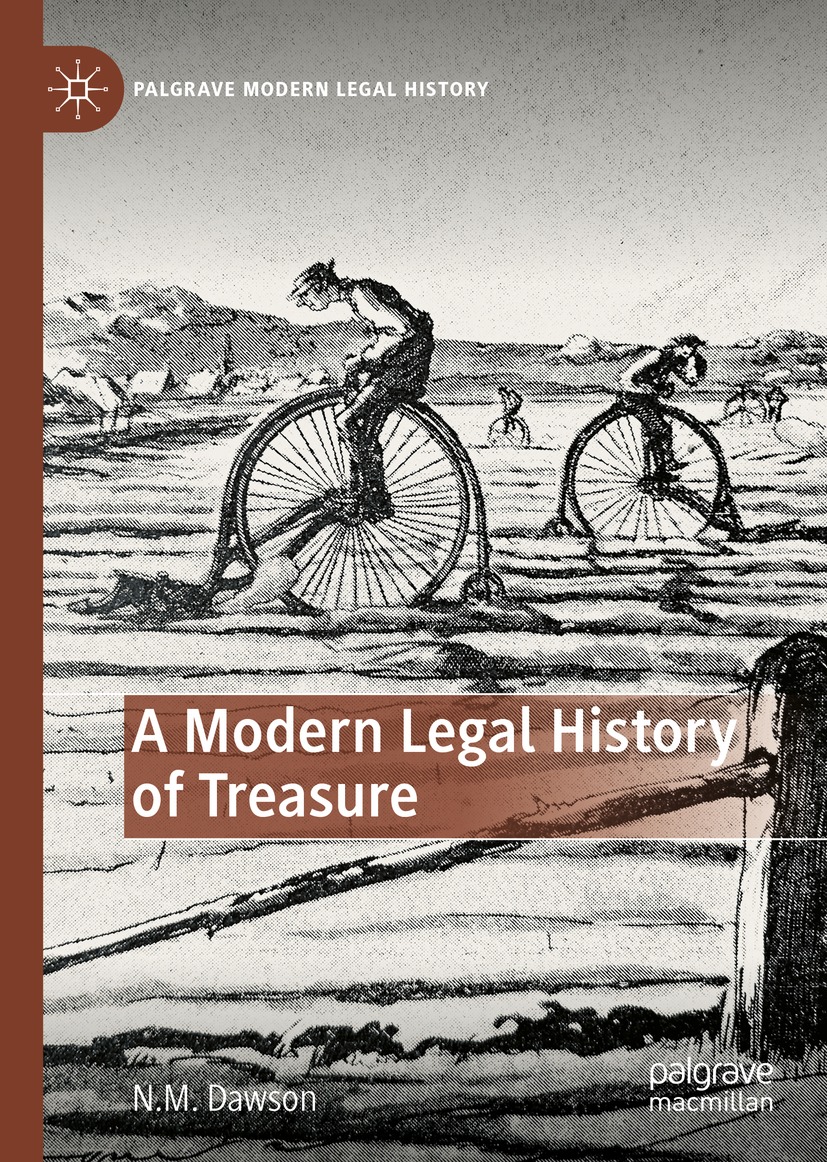Palgrave Modern Legal History
Series Editors
Catharine MacMillan
The Dickson Poon School of Law, Kings College London, London, UK
Rebecca Probert
School of Law, University of Exeter, Exeter, UK
This series provides a forum for the publication of high-quality monographs that take innovative, contextual, and inter- or multi-disciplinary approaches to legal history. It brings legal history to a wider audience by exploring the history of law as part of a broader social, intellectual, cultural, literary, or economic context. Its focus is on modern British and Imperial legal history (post 1750), but within that time frame engages with the widest possible range of subject areas.
N. M. Dawson
A Modern Legal History of Treasure

The Palgrave Macmillan logo.
N. M. Dawson
Queens University Belfast, Belfast, UK
ISSN 2947-6186 e-ISSN 2947-6194
Palgrave Modern Legal History
ISBN 978-3-031-12832-5 e-ISBN 978-3-031-12833-2
https://doi.org/10.1007/978-3-031-12833-2
The Editor(s) (if applicable) and The Author(s), under exclusive license to Springer Nature Switzerland AG 2023
This work is subject to copyright. All rights are solely and exclusively licensed by the Publisher, whether the whole or part of the material is concerned, specifically the rights of translation, reprinting, reuse of illustrations, recitation, broadcasting, reproduction on microfilms or in any other physical way, and transmission or information storage and retrieval, electronic adaptation, computer software, or by similar or dissimilar methodology now known or hereafter developed.
The use of general descriptive names, registered names, trademarks, service marks, etc. in this publication does not imply, even in the absence of a specific statement, that such names are exempt from the relevant protective laws and regulations and therefore free for general use.
The publisher, the authors, and the editors are safe to assume that the advice and information in this book are believed to be true and accurate at the date of publication. Neither the publisher nor the authors or the editors give a warranty, expressed or implied, with respect to the material contained herein or for any errors or omissions that may have been made. The publisher remains neutral with regard to jurisdictional claims in published maps and institutional affiliations.
This Palgrave Macmillan imprint is published by the registered company Springer Nature Switzerland AG
The registered company address is: Gewerbestrasse 11, 6330 Cham, Switzerland
For Cynthia, Jonathan, Sarah, and Peter,
and in memory of my father and mother
Preface
Few forms of property are as contested as treasure. Chance finders, metal detectorists, landowners, archaeologists, museum experts, and the state, all claim an interest in discovered antiquities but have sharply contrasting points of view. Even the validity and utility of the legal terms of art, treasure trove and treasure, are disputed by those eager to rid the subject of the last vestige of romance. For the legal historian, the attractions of the subject are many. Beginning with the rise of archaeology in the early Victorian era, we have the chance to examine the first major chapter in the development of cultural property/cultural heritage law in Britain and Ireland. The Treasurys principled administration of the law and practice of treasure trove from 1859 to 1992, guided by the Treasury Solicitors department, is one of the most extraordinary but unknown chapters in British administrative history, making the study of Treasury and other state records essential to a proper understanding of the subject. A legal history of treasure in Britain and Ireland is necessarily inflected by the varying political, cultural, and economic circumstances that prevailed in England, Wales, Ireland, and Scotland in the nineteenth and twentieth centuries. The partition of Ireland, Irish independence, and the retentionto this dayof the prerogative of treasure trove in Scotland in contrast with its abolition in 1996 in England and Wales and Northern Ireland, all contribute further to the kaleidoscopic nature of this inquiry. Common misconceptions about the English law of treasure trove before 1996 are a source of fascination and frustration: even the inquest verdict in relation to the Sutton Hoo treasure has been widely misunderstood for decades. When the Treasure Act 1996 abolished the prerogative claim to treasure trove (for England and Wales, and Northern Ireland) and replaced it with a statutory claim to treasure, it created a backstop category of treasure, namely, coins and other objects that would have been treasure trove under the old law, giving the legal historian the unusual prospect of influencing the outcome of future decisions by correcting some of the misunderstandings of the past. So far as concerns the detailed application of the 1996 Act, however, this is not a legal textbook; that need has been amply supplied by Anthony Guest and Paul Matthews.
The scope of the bookessentially from Victorias accession to almost the present daywas guided by advice from distinguished academics, Professor Norman Palmer and Professor David Carey Miller, both well-published in the field of treasure law. Their passing (in 2016) deprived me of expert critical readers, but I place on record my profound gratitude for their encouragement and guidance at an earlier stage and for the inspiration that I have drawn from their published work. The project was made possible by the award of a Leverhulme Major Research Fellowship (201517), and my best thanks are due to the Leverhulme Trust Board. I also acknowledge the help and encouragement of fellow academics, Professor Patty Gerstenblith, Professor Hector MacQueen, Professor Lionel Bently, Professor John Cairns, and Professor Robin Hickey. In undertaking the research for the book, I was helped by many people, and I am glad to acknowledge my debt to them here: the staff of the McClay Library, Queens University, Belfast; The National Archives; Parliamentary Archives; Duchy of Lancaster Office (archives); Guildhall Library; London Metropolitan Archives; National Records of Scotland; National Archives of Ireland; Public Record Office of Northern Ireland; Suffolk Record Office; Shetland Archives; Royal Irish Academy library; British Museum Anthropology Library and Central Archive; University College Dublin Archives; Advocates Library; Society of Antiquaries of London library; Society of Antiquaries of Scotland; Bodleian (Weston) Library; Antiquities Reading Room, Ashmolean Museum; Borthwick Institute for Archives, York; Lincolns Inn library, and the British Library. I am grateful for help with specific points from Ian Richardson, Senior Treasure Registrar, British Museum; Dr Mary Cahill, former Keeper of Irish Antiquities, National Museum of Ireland; Dr Maeve Sikora, Keeper of Irish Antiquities, National Museum of Ireland, and NMI director, Lynn Scarff; His Honour Judge Brian Sherrard; Alastair Willis, Senior Curator of Numismatics and the Welsh economy, Amgueddfa Cymru-National Museum Wales; Dr Richard Edgcumbe, the Dr Genevieve Davies Curator of Jewellery in the V&A; Nicholas Rheinberg, Archivist, Coroners Society of England and Wales; Henry Lythe, Honorary Librarian, British Numismatic Society and Royal Numismatic Society; Raya McGeorge, archivist, Fishmongers Company, London; Dr Greer Ramsey, Curator of Archaeology, Ulster Museum; Ken Neill, Department for Communities (NI); Beth Jones, Collections Information Manager, Royal Collection Trust; Professor Hugh Magennis, Queens University, Belfast; Dr Thomas Muinzer, University of Aberdeen; the late Gregory OConnor, archivist, National Archives of Ireland; the late Professor Nial Osborough, University College, Dublin; Professor Terence Dooley, NUI, Maynooth; Rosemary Carson, and Dr Alice Stevenson, University College London. I am grateful for the helpful comments of the publishers anonymous reader. My thanks also to Dr Barbara Henry and Cynthia Batten for research assistance at an early stage and to Bernie Brady of The Tanyard in Ramelton, Co. Donegal, to which I de-camped on extended writing holidays in 2018 and 2019.

